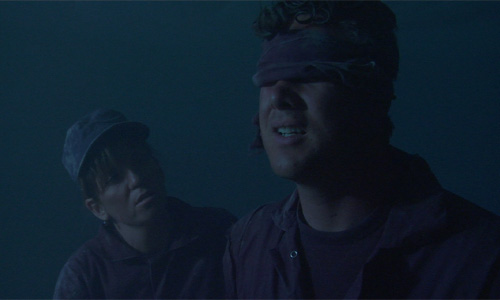Doesn anyone know how Deep Focus was achieved in the low light situations of a lot of the early film noir movies and other movies?
In particular, the high contrast low key lighting of film noir movies sometimes used only one key light but somehow managed to achieve deep focus (foreground midground and background in focus).
I'm struggling to understand how this was achieved, especially since technology then was not as advanced and not as good in low light. The only way I can think of with my limited knowledge is to open the aperture as wide as it will go and use an extremely wide angle lense and use the hyperfocal/infinity focus, but there is no distortion evident in the shots, I would think that they may use a more 'normal' focal length to minimise barrel distortion but that doesn't make sense because in some shots the foreground is very close, too close for infinity focus.
The the only other way I can think of would be to stop it right down to allow for deep DOF, but this isn't feesible as there isn't enough light to support that, and even if there were focusing on something that close might not have the deep focus effect.
A few reference shots:
Deep focus:
http://images.suite101.com/2791790_COM_kane_boy_window.jpg
Very low light but all in focus:
http://www.takegreatpictures.com/app/webroot/content/2010_images/2006/08/21/citizen_kane_5.jpg
Notice how close the glass is
http://www.takegreatpictures.com/app/webroot/content/2010_images/2006/08/21/citizen_kane_3.jpg
I would love to be able to use this technique at home and would make some shots so much easier!
So what am I missing? It's obviously something!
In particular, the high contrast low key lighting of film noir movies sometimes used only one key light but somehow managed to achieve deep focus (foreground midground and background in focus).
I'm struggling to understand how this was achieved, especially since technology then was not as advanced and not as good in low light. The only way I can think of with my limited knowledge is to open the aperture as wide as it will go and use an extremely wide angle lense and use the hyperfocal/infinity focus, but there is no distortion evident in the shots, I would think that they may use a more 'normal' focal length to minimise barrel distortion but that doesn't make sense because in some shots the foreground is very close, too close for infinity focus.
The the only other way I can think of would be to stop it right down to allow for deep DOF, but this isn't feesible as there isn't enough light to support that, and even if there were focusing on something that close might not have the deep focus effect.
A few reference shots:
Deep focus:
http://images.suite101.com/2791790_COM_kane_boy_window.jpg
Very low light but all in focus:
http://www.takegreatpictures.com/app/webroot/content/2010_images/2006/08/21/citizen_kane_5.jpg
Notice how close the glass is
http://www.takegreatpictures.com/app/webroot/content/2010_images/2006/08/21/citizen_kane_3.jpg
I would love to be able to use this technique at home and would make some shots so much easier!
So what am I missing? It's obviously something!
Last edited:






